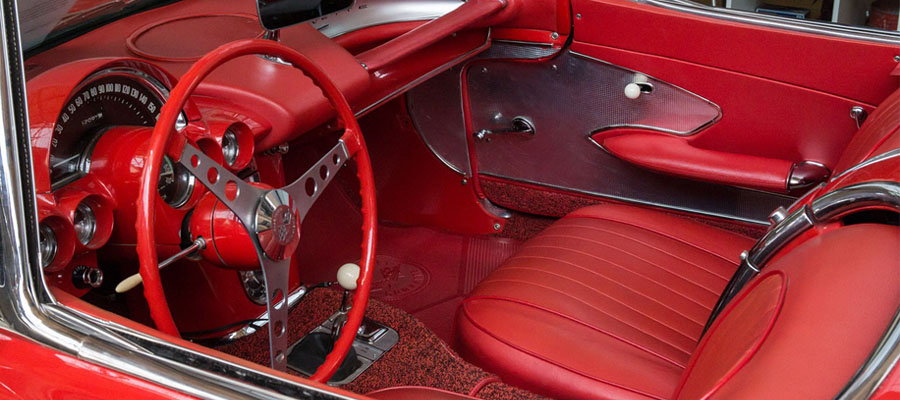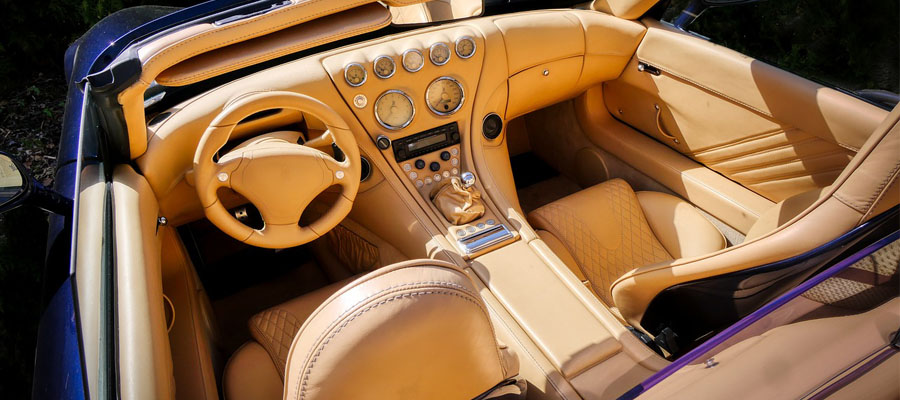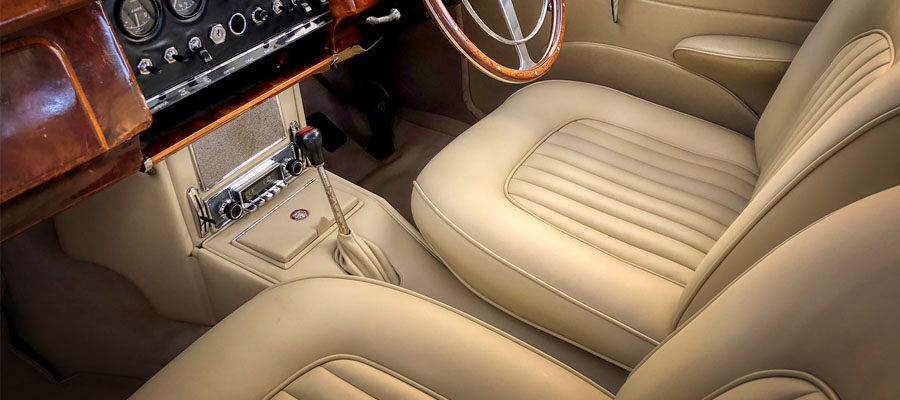Last Updated on July 15, 2021 by Mark S. Taylor
It’s not difficult to disregard your car’s inside, particularly with regards to keeping the seats clean. Notwithstanding, keeping the leather seats in extraordinary condition can truly make your car stick out. While this may sound work escalated, the means are entirely basic, and when done routinely, cleaning is a breeze.

Contents
Types of Leather in Cars
Before you get ready to clean your car seat, you should know the basic information that many leather car seats are covered with synthetic fibers. Thus, dust can be removed easily and safely. However, if your car has all leather seats, you should know that there are 4 types of leather that you should use for your car seats. It includes:
- Aniline
- Semi-Aniline
- Full-Grain
- Corrected Grain Leather
So, knowing what type of car seat skin you have is an important step before you learn how to clean car seats.

Aniline
Aniline leather is a very smooth natural leather with visible marks such as scratches and blemishes, but it is not worn or used anywhere. It has been in widespread use over the past decade, but its use has declined dramatically over the past 20 years. Since aniline leather is clean and colorful, it does not contain any protective coating or coating. This leather is more susceptible to dust and abrasion than other types of leather used in the automotive sector. Fortunately, modern cars have aniline leather, but be careful if you have an old car with aniline leather inside.
Semi-Aniline
Semi aniline leather absorbs colored dyes better than aniline leather. After the dyeing process is completed, a protective layer is applied to the aniline leather, which increases the abrasion resistance. Therefore, aniline leather is called incomplete leather and semi-aniline leather is called processed leather.
Full-Grain
Full or brown nappa leather retaining the texture of the original leather. This is the sumptuous leather trim found in high-end luxury cars. The biggest appeal of this leather is that it retains the original brand and pattern, which gives it a more luxurious look. It has a good finish and is strong and durable.
Corrected Grain Leather
Granular leather has the lowest natural properties of all types, and this type of leather is usually found on economy class cars and on vehicles with granular or imprinted leather in general. .. How do you actually prepare? Surface coatings are applied after defects have been removed by applying particles to the surface using various processes. It has a decorative wood grain pattern on the surface to enhance the look. It has nothing to do with aniline or any other skin type, making it a great choice for families with children and pets.

Tips
- Verify whether your car seats have any punctured regions. Assuming this is the case, take care not to get water, chemical or conditioner stuck down into the openings. Counsel your car manual. There ought to be explicit guidelines on the most proficient method to appropriately care for the leather upholstery, just as items to keep away from.
- Vacuum the seats. Utilize a vacuum hose and connection or wet-dry vac to suck up any huge particles of earth. Utilize outrageous care so you don’t scratch the leather. You could likewise utilize an air blower to the middle of the seat breaks.
- Eliminate surface earth. In the event that your seats are truly filthy, you’ll have the option to see a layer of grime on the leather; in any case, even apparently clean seats will have a layer of soil and grime that is collected after some time. Shower a microfiber towel with cleaner and wipe over the seats. Use leather cleaner, saddle cleanser, or another gentle leather cleanser. You can utilize a business cleaner for leather seats or make your own: Combine 1 section white vinegar and 2 sections linseed oil in a bowl or shower bottle.
- Utilize a brush to profound clean the leather. Shower the cleaner straightforwardly onto your seats and utilize a delicate shuddered brush to tenderly scour the leather. This will unsettle the soil and carry it to the surface. All things considered, shower the fiber brush and use it to scour the leather. Then, at that point, wipe dry with a microfiber fabric.
- Wipe the seats clean. Utilize a perfect and dry microfiber fabric to clear off the cleaning specialist that you scoured into the leather. You should see soil, oil, and grime on the fabric.
- Consistently perfect your seats. While you should daintily clean your seats each month or something like that, attempt to profound clean your seats 3 to 4 times each year.
- Pick a water-based, pH nonpartisan conditioner. Search for a top-notch leather conditioner that doesn’t contain petrol distillates, silicone, or waxes. Less expensive leather conditioners may stick to the leather and have an oily completion.
- Play out a spot test. Delicately focus on its anything but a microfiber material or wipe. Ensure the cleaner doesn’t harm or stain your seats.
- Condition your seats. Try not to apply a lot of conditioners, which will sit on top of the leather, making the seats oily or smooth. If all else fails, take a perfect dry microfiber fabric and delicately wipe over the molded seats to eliminate any overabundance conditioner.
- Make certain to follow the item bearings. Park your car in the shade or in your carport short-term. Allow the conditioner to sit for somewhere around 60 minutes.
- Utilize a microfiber material to buff the seats. When the conditioner has gotten an opportunity to splash into the leather, take a perfect dry microfiber material and clean the seats. Utilize roundabout movements and take care to wipe up abundance conditioner. Don’t over-condition your leather seats. Most seats just need molding treatment a couple of times each year.
Leather seats add luxury to the car. It’s expensive, so be careful. Here’s how to clean a leather car seat to keep it clean and beautiful: Vacuum the sheet first to make sure the cracks are clean and clean. Then peel the leaves. Do not use bleach or alkaline detergents as they can damage your skin. You can use a commercially available leather cleaner or make your own. In a bucket, combine the stone cleaner or liquid dish soap and warm water. Process the floor plan material and clean up the seating area. Do not soak your leather, as excess water can accumulate in the seat folds and wet the cushions. Too much water can also discolor the skin. Spray on leaves and let sit for 5 minutes, then rinse. Remove dust from sheets. Contamination occurs with or without rapid cleaning. Take one of them and start cleaning.
FAQ
1.What is the best way to clean leather seats in a car?
Ans: Mix hot water with castor soap or liquid dish soap in a bucket. Use a water ratio of 5:1. Moisten the cloth with the solution and clean the surface of the chair. Do not wet your skin. The seats can collect too much water and seep into the cushion.
2. Can you use Windex on leather car seats?
Ans: Strong detergents (such as Windex and bleach), furniture polishes (such as Pledge), alkaline cleaners, fabrics, waxes and silicones can also damage and adhere to leather.
3. Is baking soda safe to use on leather?
Ans: For leather, it is best to use water or a special leather detergent. Traditional remedies like baking soda, white vinegar, tartar, and lemon juice can worsen your skin tone and make the problem worse.
4. What cleaning products are safe to use on leather?
Ans: A simple and effective household cleaner containing equal amounts of vinegar and water can be used to treat problem areas. Place them in a small bucket, stir and dip into the edges of the fabric. Press down on the cloth to keep it damp but not wet, then clean the stained area of the skin.
